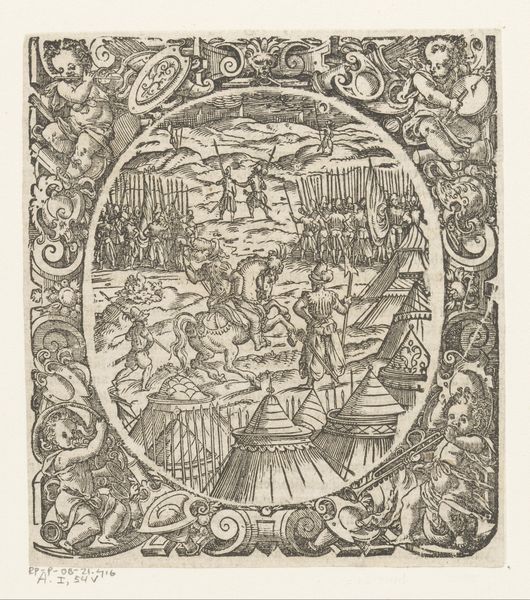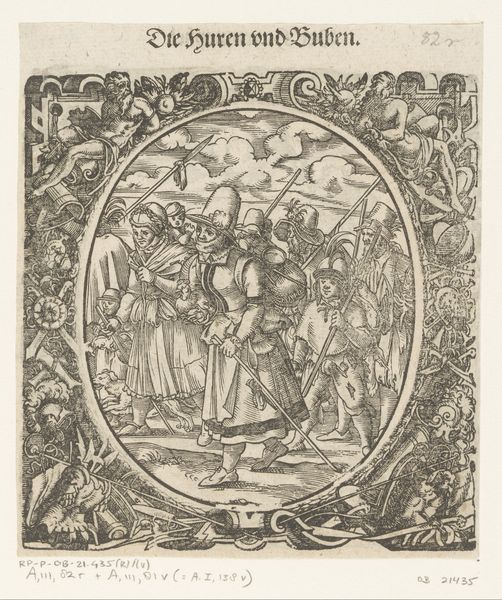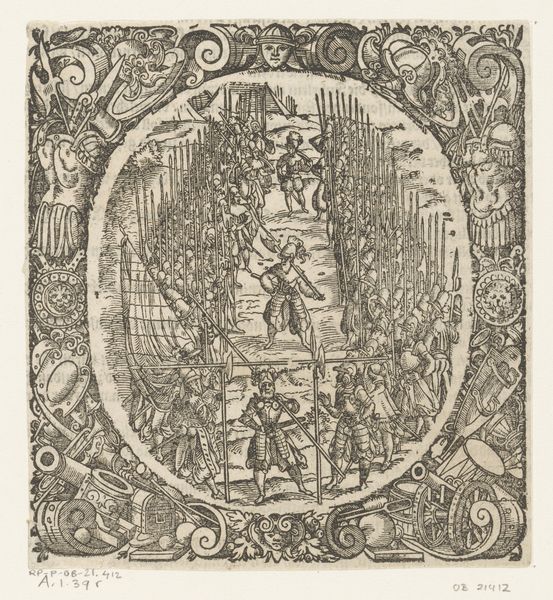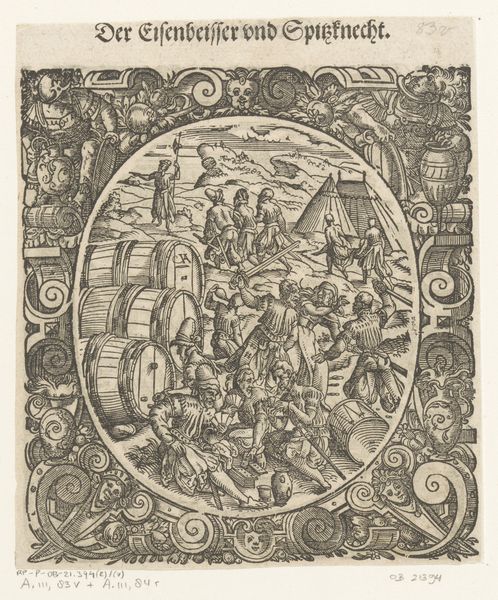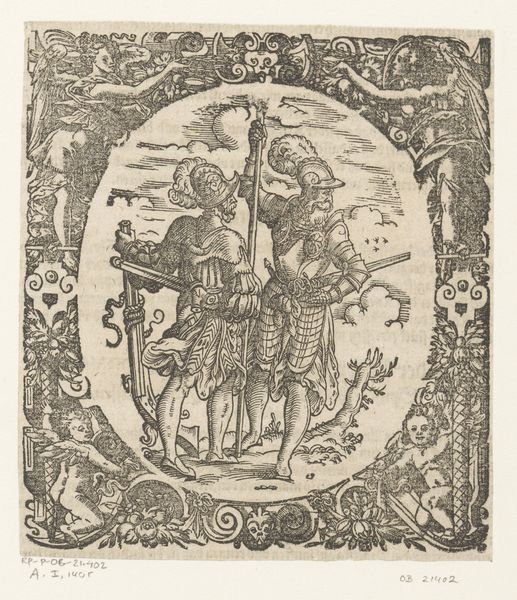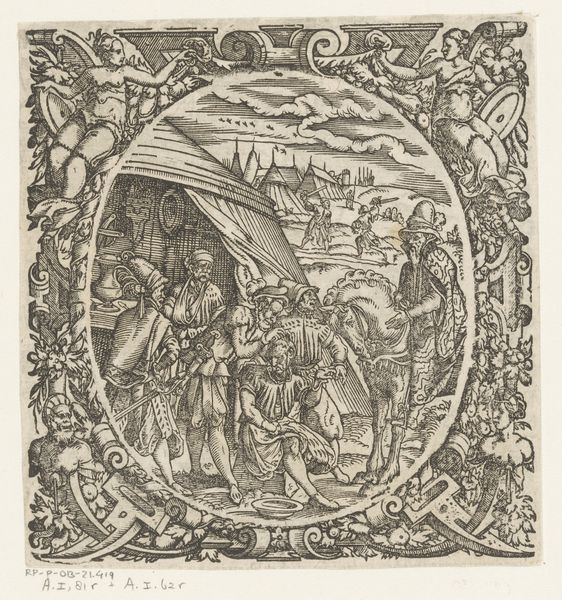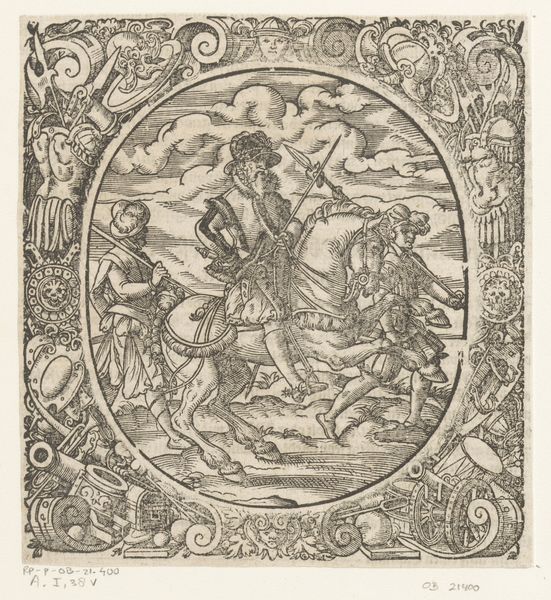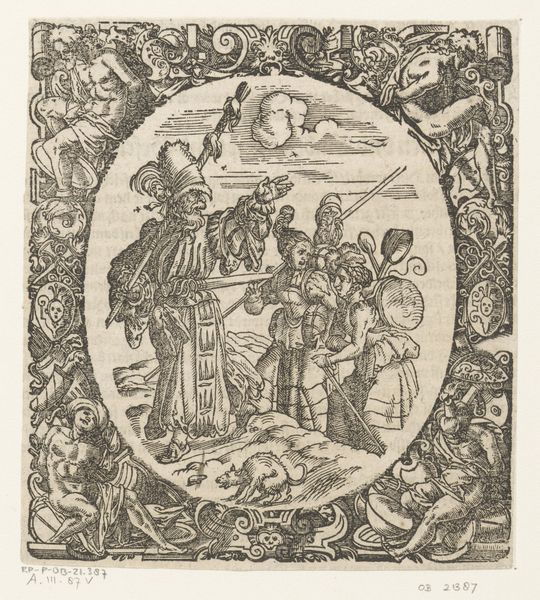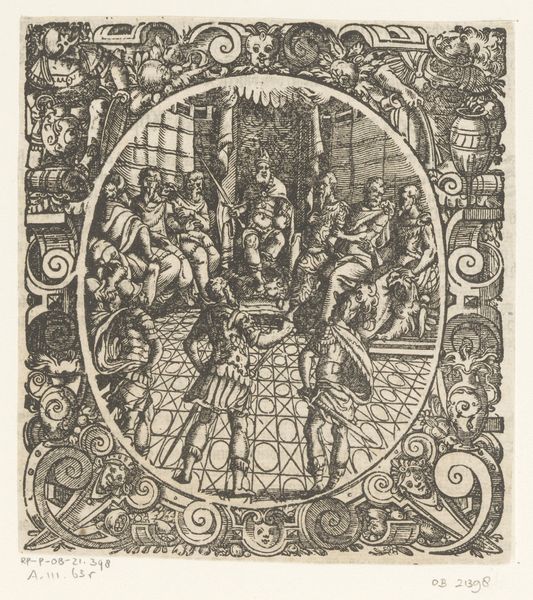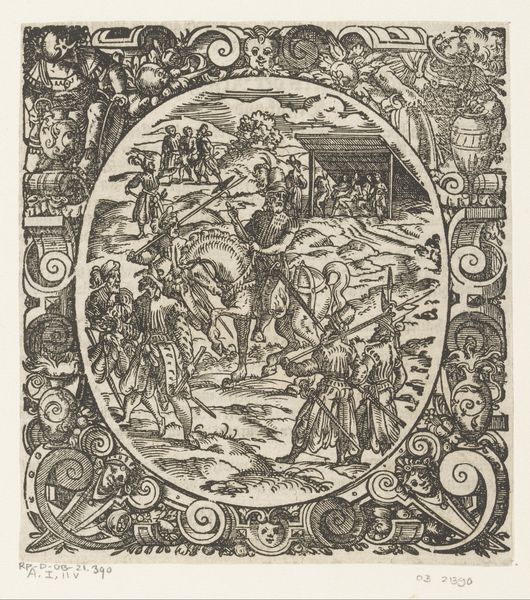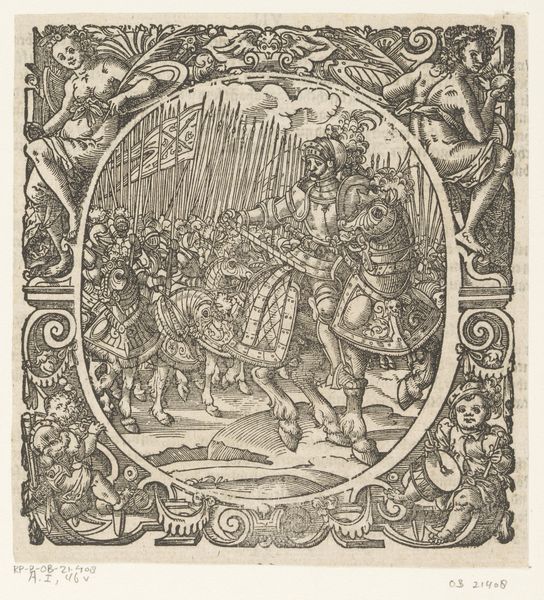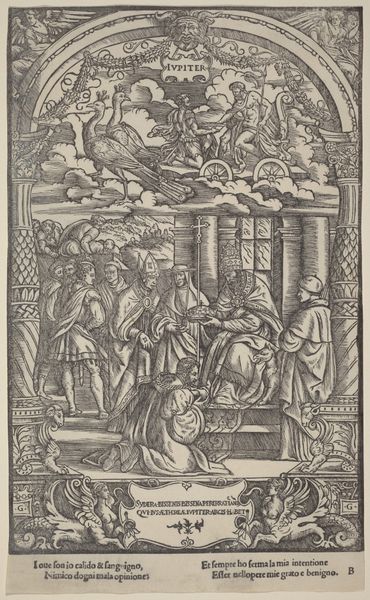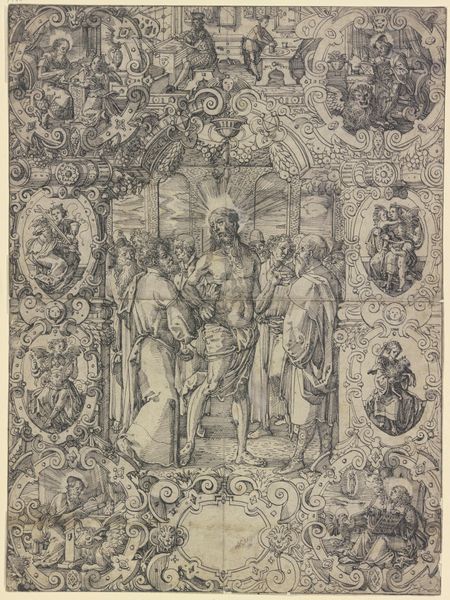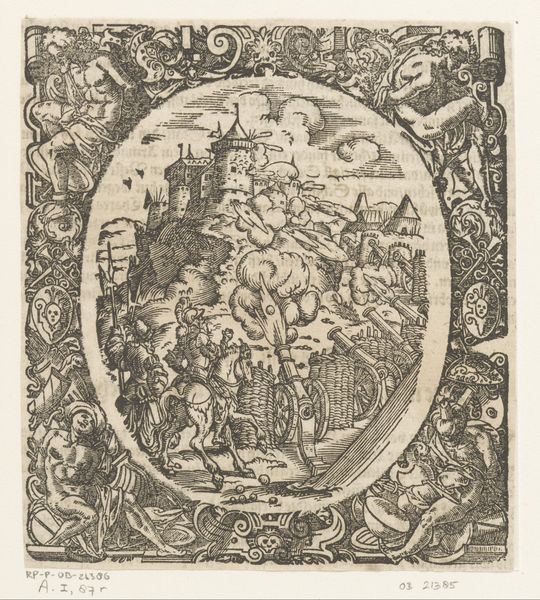
print, engraving
# print
#
figuration
#
11_renaissance
#
line
#
genre-painting
#
history-painting
#
northern-renaissance
#
engraving
Dimensions: height 147 mm, width 132 mm, height 113 mm, width 88 mm
Copyright: Rijks Museum: Open Domain
Editor: So this is Jost Amman’s “Uitbetaling van soldij,” or “Payment of Soldier’s Wages,” from 1573, an engraving now at the Rijksmuseum. It’s such an intricate scene, enclosed in this playful oval frame. There's a central tented area where men are gathered, seemingly counting coins. What cultural narratives do you think this image evokes? Curator: This print encapsulates a fascinating moment, a slice of life that's become iconic through its very representation. Notice the symbolic weight Amman gives to the tent; it's not merely shelter. Consider the cultural memory of military campaigns: the impermanence and the ever-present structure of hierarchy, illustrated through its shape but also the behavior in and around it. The money reinforces this, because it represents trust and labor. What’s striking to you about *how* they’re being paid? Editor: I see a definite disparity. Some seem to be directing, and others are receiving. There's also a clear age difference. Some look quite young, others are more weathered and seasoned, you might say. I suppose that reinforces the ideas of power dynamics at the time? Curator: Precisely! It speaks volumes about social and economic hierarchies inherent in military structures and 16th-century society. Beyond that, do you think the symbolic framing—the cherubs, the instruments—play a part in creating meaning here? Editor: Well, it's juxtaposing the grim realities of military life with this image of innocence and play. So there's that constant cycle, it is part of life. I guess what I am wondering is how relevant this piece could still be in today's climate? Curator: Consider it, this reminds us how certain social dynamics and cultural representations persist, shaping our understanding of conflict, labor, and power, generation after generation. I feel much more confident in talking about those historical representations now, it makes me question how little things may have changed since Amman created the print.
Comments
No comments
Be the first to comment and join the conversation on the ultimate creative platform.
